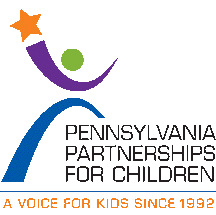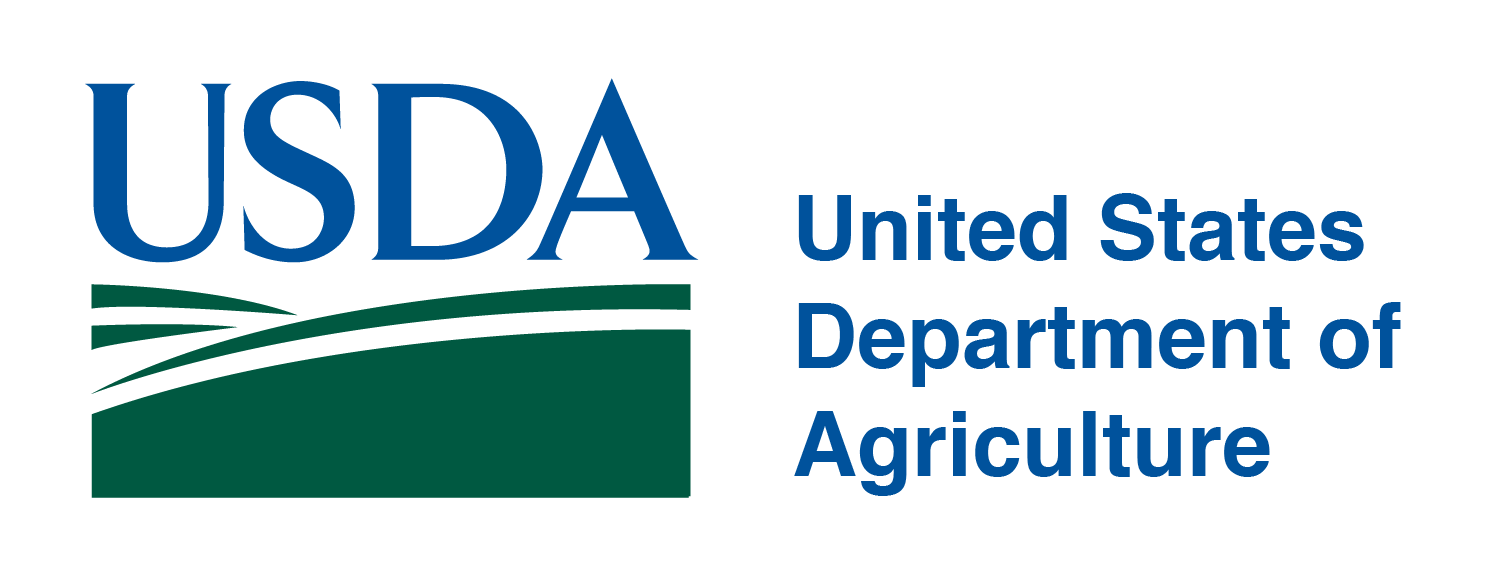- CMS: Medicare Program; Implementation of Prior Authorization for Select Services for the Wasteful and Inappropriate Services Reduction (WISeR) Model
- Public Inspection: CMS: Medicare Program: Implementation of Prior Authorization for Select Services for the Wasteful and Inappropriate Services Reduction Model
- CMS: Secretarial Comments on the CBE's (Battelle Memorial Institute) 2024 Activities: Report to Congress and the Secretary of the Department of Health and Human Services
- HHS: Patient Protection and Affordable Care Act: Marketplace Integrity and Affordability
- HRSA Announces Action to Lower Out-of-Pocket Costs for Life-Saving Medications at Health Centers Nationwide
- Public Inspection: HHS: Patient Protection and Affordable Care Act: Marketplace Integrity and Affordability
- Increased Risk of Cyber Threats Against Healthcare and Public Health Sector
- Eight Hospitals Selected for First Cohort of Rural Hospital Stabilization Program
- Announcing the 2030 Census Disclosure Avoidance Research Program
- CMS: Medicare Program; Hospital Inpatient Prospective Payment Systems for Acute Care Hospitals and the Long-Term Care Hospital Prospective Payment System and Policy Changes and Fiscal Year 2026 Rates; Requirements for Quality Programs; and Other Policy Changes; Correction
- CMS: Medicare Program; Hospital Inpatient Prospective Payment Systems for Acute Care Hospitals and the Long-Term Care Hospital Prospective Payment System and Policy Changes and Fiscal Year 2026 Rates; Requirements for Quality Programs; and Other Policy Changes; Correction
- CMS: Medicare and Medicaid Programs; Contract Year 2026 Policy and Technical Changes to the Medicare Advantage Program, Medicare Prescription Drug Benefit Program, Medicare Cost Plan Program, and Programs of All-Inclusive Care for the Elderly; Correction
- CMS: Medicare and Medicaid Programs; Contract Year 2026 Policy and Technical Changes to the Medicare Advantage Program, Medicare Prescription Drug Benefit Program, Medicare Cost Plan Program, and Programs of All-Inclusive Care for the Elderly; Correction
- CMS: Medicare Program; Prospective Payment System and Consolidated Billing for Skilled Nursing Facilities; Updates to the Quality Reporting Program for Federal Fiscal Year 2026
- CMS: Medicare Program; FY 2026 Hospice Wage Index and Payment Rate Update and Hospice Quality Reporting Program Requirements
Latest National Rankings for Child Well-Being Show Pennsylvania at 22nd

Pennsylvania ranks 22nd overall in child well-being, according to the 2023 KIDS COUNT® Data Book, a 50-state report of recent household data developed by the Annie E. Casey Foundation analyzing how children and families are faring. When looking specifically at economic well-being, the state ranks 22nd, while it ranks 20th in health.
The health domain looks at the percentage of children who lack health insurance, child and teen death rates, the percentage of low birth-weight babies and obesity among 10–17-year-olds. The Data Book reports that Pennsylvania’s rate of uninsured children is 4% and approximately 126,000 children cannot access affordable, quality health care coverage through Medicaid and the Children’s Health Insurance Program. In addition, Pennsylvania is ranked 23rd for the percentage of low birth-weight babies.
Pennsylvania families who rely on Medicaid for coverage for themselves and their children may have recently noticed a significant change: the Medicaid redetermination process that began April 1st through which DHS determines whether enrollees still qualify. This change comes about with the end of the public health emergency. During this unwinding process, it is imperative that children no longer eligible be connected to CHIP to avoid gaps in coverage and to ensure that children who remain eligible for Medicaid keep their coverage without experiencing inappropriate terminations or disruptions that often affect children more than the adult population.
The Data Book also reports that too many parents cannot secure child care compatible with work schedules and commutes. The Data Book reports that in 2020—21, 12% of children birth to age 5 in Pennsylvania lived in families in which someone quit, changed, or refused a job because of problems with child care. And women are five to eight times more likely than men to experience negative employment consequences related to caregiving.
Even if parents can find an opening for child care near their home, they often can’t pay for it. Pennsylvania’s average annual cost of center-based child care for a toddler was $11,346, or 10% of the median income for a married couple and 35% of a single mother’s income in the state.
Penn State Extension Mapping Project Key to Securing Federal Broadband Funding
As the federal government in the coming weeks prepares to announce the allocation of funding to expand broadband internet infrastructure in every state, a service-availability mapping project led by Penn State Extension is likely to play a key role in securing tens of millions of dollars or more in additional investment for Pennsylvania.
In November 2022, the Pennsylvania Broadband Development Authority announced a contract with Penn State Extension to develop and update state broadband maps to enable the commonwealth to maximize its federal funding allocation for high-speed internet expansion under the Infrastructure Investment and Jobs Act.
Determining internet service availability across Pennsylvania is a critical factor in calculating the state’s portion of the $42.5 billion available through the act’s Broadband Equity, Access and Deployment program. Rules for the program call for the funding to be allocated based, in large part, on each state’s percentage of unserved locations, as identified by updated Federal Communications Commission broadband maps.
Under the Broadband Development Authority contract, Penn State Extension educators developed public broadband spatial analysis and mapping tools; evaluated the accuracy of industry-provided data to inform the state’s process of challenging discrepancies in FCC maps of broadband service availability; and provided analyses to help state and local officials estimate the cost of projects to deploy fiber-optic cable for high-speed internet delivery.
James Ladlee, state program leader for Penn State Extension’s Emerging and Advanced Technology Initiative, explained that this work helped the authority to identify more than 50,000 Pennsylvania locations that were incorrectly reported as having access to high-speed internet and to submit challenges to the FCC by the Jan. 13 deadline.
“So far, more than 28,000 of those challenges have been accepted, with several thousand still pending,” Ladlee said. “Each successful service-availability challenge is expected to positively influence Pennsylvania’s share of this investment, pushing the value of this work to, conservatively, tens of millions in additional broadband funding likely secured for the commonwealth.”
According to Ladlee, the authority’s partnership with Penn State Extension helped Pennsylvania submit the third most individual service-availability challenges among states nationwide.
Ladlee noted that Extension previously worked in partnership with the state Public Utility Commission on mapping tools that helped the state obtain almost $369 million in broadband funding under a different federal program, which is expected to enable up to 327,000 Pennsylvanians to gain high-speed internet access. He pointed out that improving the state’s broadband map is an ongoing effort that will help ensure accurate and equitable distribution of resources in the future.
“While the map we developed for the authority will never be done, it’s an excellent start to help Pennsylvania identify areas for further review through the upcoming state challenge process, which is required after the federal funding is awarded,” he said.
Rick Roush, dean of Penn State’s College of Agricultural Sciences — under which Penn State Extension is administered — said enhancing broadband infrastructure is critical for the future of agricultural research, educational program delivery, medical and veterinary telehealth, business development across the food system, and career and workforce development. He said Extension’s contribution to this initiative is consistent with the college’s legacy of advancing technology that benefits the state’s agriculture, communities and citizens.
“Robust broadband deployment represents an opportunity to develop and adopt the next generation of innovative technologies that use connected digital infrastructure to help improve efficiency and sustainability and support Pennsylvania’s economy,” he said. “The college is proud to partner with the Broadband Development Authority to expand broadband funding across the commonwealth, and we look forward to helping improve high-speed internet availability and technological advancement even further in the future.”
Appalachian Regional Commission Releases ARISE Program Webinar

ARC recently released a new notice of solicitation for applications (NOSA) for the Appalachian Regional Initiative for Stronger Economies (ARISE), our $73.5 million funding opportunity supporting collaborative, multi-state projects in Appalachia.
More than 120 prospective grantees joined ARC for a webinar to learn more about the new ARISE application process and templates.
Learn more about updates to the ARISE application and funding process by going here or revisiting the recording of the webinar.
New Detailed Population Estimates Released for Pennsylvania Counties

The U.S. Census Bureau has released the 2022 Detailed National, State, and County Population Estimates, the final set of detailed population estimates for this vintage. The data as of July 1, 2022, provides estimates at the national, state, and county levels for population by age, sex, race, and Hispanic origin.
Highlights from this release include:
- The population cohorts aged 75 to 79 and 70 to 74 were the fastest-growing, with those aged 75 to 79 far exceeding other growing cohorts.
- For every 10 non-Hispanic White individuals lost in Pennsylvania from 2020 to 2022, the state roughly gained 8 persons of color.
- The most substantial growth occurred in the Hispanic or Latino, multiracial*, and Asian* populations.
*Refers to non-Hispanic individuals.
To read more, visit: https://pasdc.hbg.psu.edu/Data/Research-Briefs.
CMS Releases New Diabetes Infographic and Prevalence Data

CMS has released new estimates on diabetes prevalence and an accompanying infographic to describe the latest data and known disparities among Medicare enrollees with diabetes.
Diabetes is a condition of particular concern to many minority and underserved communities. The number of people in the U.S. with diabetes increased from almost 29 million in 2012 to more than 37 million in 2019. The new CMS diabetes prevalence infographic highlights existing health disparities as well as prevention resources to address the epidemic. The infographic also spotlights how the increased prevalence of non-gestational diabetes among minority populations has led to additional health complications. Finally, the infographic includes information on the increased impact that diabetes has on Medicare enrollees and the disparities that are observed among various subpopulations in the Medicare community.
In addition to the infographic, CMS has released the Medicare Current Beneficiary Survey (MCBS) Public Use File on diabetes prevalence and self-management among Medicare beneficiaries living in the community in 2020. This file presents estimates on diabetes prevalence, diabetes-related health issues, and diabetes knowledge and self-management by a variety of beneficiary characteristics including race/ethnicity, income, and primary language spoken at home.
You can find more information and access the Public Use File and supporting documentation here.
For more information on health equity, visit https://go.cms.gov/omh for the latest updates on resources, data, and more equity work, sign up for our listserv.
Pennsylvania Broadband Development Authority to Hold Community Engagement Events Across the Commonwealth, Collect Feedback to Shape Expansion and Digital Equity Programs

Community engagement activities will support the development of the Commonwealth’s BEAD and Digital Equity plans
Pennsylvania Broadband Development Authority (Authority) Executive Director Brandon Carson announced a series of upcoming public engagement activities to support the development of the Commonwealth’s Broadband Equity, Access, and Deployment (BEAD) and Digital Equity (DE) program plans. Extending and expanding access to broadband across Pennsylvania and making connection more reliable and affordable is a top priority of Governor Josh Shapiro and his Administration.
The ‘Internet for All: Connecting the Commonwealth of Pennsylvania’ initiative aims to reach a diverse cross-section of residents, businesses, and organizations through a public survey and robust schedule of community conversations and roundtable discussions in all regions of the state. The feedback and data received during these events will be crucial to the Authority as it works to minimize Pennsylvania’s existing digital divide.
“Pennsylvanians have an absolutely essential role in helping the Authority develop the BEAD and DE plans and we want to hear from as many Pennsylvanians as possible at our upcoming community engagement events,” said Executive Director Carson. “We’re working hard to make Internet for All a reality in Pennsylvania, and being able to incorporate feedback from our residents, businesses, and organizations is crucial in helping us develop broadband plans that address barriers and needs.”
Community engagement activities will include:
- Community survey to help assess connectivity and digital access and identify barriers. The survey is being released throughout the commonwealth using several deployment methods to broaden its reach. Respondents will be able to submit a paper survey, respond online, or participate via phone. Paper surveys will be available for residents at select locations, including businesses, educational centers, local government offices, social service offices, and healthcare facilities.
- In-person community conversations across the commonwealth will provide Pennsylvanians with an opportunity to learn more about BEAD and DE and discuss issues such as barriers to digital access, equity, and literacy. The community conversations will also include discussions on affordability inequities, technical support, and cybersecurity needs. Several community partners will host conversation events to help collect feedback and further broaden the Authority’s outreach efforts.
- Mix of in-person and virtual roundtables will be held to allow for more dynamic events with stakeholders, advocates, and subject matter experts. The roundtables will enable participants to delve further into issues facing the commonwealth and share perspectives for overcoming current challenges.
Pennsylvanians should check the Community Events section of the Authority’s website often, as it will be updated to include details for new events as soon as they are scheduled.
The Authority has also formed a working group that includes stakeholders with digital access and equity interests who are active within their communities. This group is comprised of a variety of sectors and primarily includes organizations representing covered populations, as defined in the DE Act. The working group, which meets biweekly to stay apprised of the Authority’s BEAD and DE activities and offer insight, will continue to meet to help inform and guide the implementation of the DE plan.
For more information about the Pennsylvania Broadband Development Authority and the upcoming community engagement activities, visit the Authority’s website.
New Brief Highlights State Opioid Settlement Spending Decisions

In order to spend funding received through the national settlement and other opioid-related settlements, states have developed legislative and legal frameworks that distribute funds and decision-making authorities between the state government, local governments, and/or special abatement funds or trusts. States are in different stages in the process of receiving money, deciding how to spend it, implementing funded programs, and reporting on spending and outcomes. However, 17 states have now approved and published their plans for a first year of spending, which often include priority areas or approved uses for funds. A smaller subset of states have awarded settlement funds to specific abatement programs. Many of these plans were published in the final months of 2022 or first months of 2023 as part of annual reports on settlement spending activity.
This issue brief provides an overview of published statewide opioid settlement spending plans and appropriations made to date and highlights initial priorities and investments outlined in these plans.
National Rural Leaders Program Accepting Applications

The National Rural Health Association’s (NRHA) Rural Health Fellows Program is a yearlong, intensive training program that develops leaders who can articulate a clear and compelling vision for rural America. The goal of the fellows program is to educate and develop a network of diverse rural leaders that will step forward to serve in key positions in the association, affiliated advocacy groups, and local and state legislative bodies with health equity as a main focus.
Each year, NRHA selects 10 to 15 highly motivated individuals who have proven their dedication to improving the health of rural Americans through their educational or professional experience.
The submission period for 2024 Rural Health Fellows applications is now open. For more information, contact Ally Zimmerman.
USDA Partners with Agricultural Producers to Strengthen Markets and Create Jobs for Producers in 19 States

U.S. Department of Agriculture (USDA) Secretary Tom Vilsack announced today that USDA is making investments that will create new and better markets for agricultural producers and food businesses in 19 states across rural America.
“The Biden-Harris Administration and USDA are standing up for America’s farmers and ranchers by expanding processing capacity, creating fairer markets, more revenue streams and market opportunities which help bring down food costs for families at the grocery store,” Secretary Vilsack said. “We are partnering with entrepreneurs in rural areas to build brighter futures, connect business owners to new markets and create good jobs for generations to come. These investments reflect the goals of President Biden’s Investing in America agenda to rebuild our economy from the bottom up and middle out and make our communities more resilient.”
USDA is making investments worth $320 million to strengthen food supply chains and create more opportunities for producers and entrepreneurs in 19 states: Alabama, California, Connecticut, Iowa, Idaho, Kentucky, Massachusetts, Michigan, Minnesota, Montana, North Carolina, North Dakota, New Hampshire, New York, Ohio, Oklahoma, Pennsylvania, Texas and Virginia.
To learn more, read the full news release.
KFF Launches Medicaid Enrollment and Unwinding Tracker

The Medicaid Enrollment and Unwinding Tracker presents the most recent data on monthly Medicaid enrollment, renewals, disenrollments, and other key indicators reported by states during the unwinding of the Medicaid continuous enrollment provision. The unwinding data are pulled from state websites, where available, and from the Centers for Medicare & Medicaid Services (CMS).
To view data for specific states, click on the State Enrollment and Unwinding Data tab.
